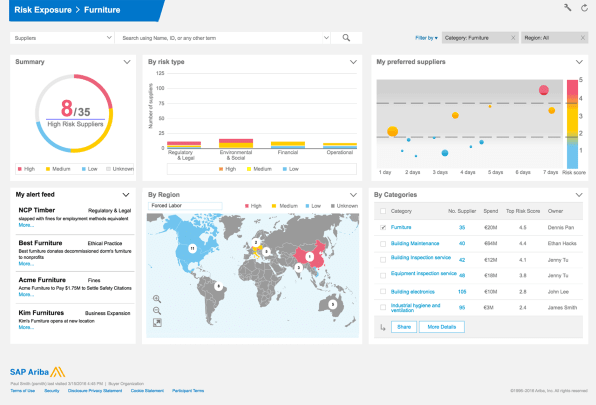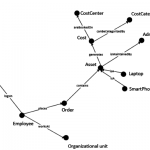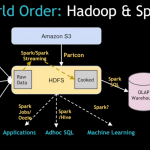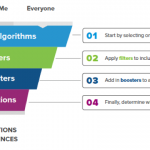Machine Learning: A New Weapon In The War Against Forced Labor And Human Trafficking
Recent United Nations estimates indicate that approximately 21 million people around the world are trapped in forced labor situations, including about 1.5 million in North America.
Many of these people are being exploited in ways that have existed throughout history: About 22% are victims of “forced sexual exploitation,” with others made to work in agriculture, manufacturing, construction, or domestic labor, according to the report from the U.N.’s International Labor Organization.
Researchers and activists say part of the solution to this ancient problem may be surprisingly modern: Machine learning and similar statistical tools can identify suppliers of goods and services that are more likely to involve forced labor, whether they’re electronics manufacturers in developing countries or escort services in the United States. In the U.S., where sex work is frequently advertised online, leaving a digital trail, these techniques can also help guide law enforcement to sex trafficking gangs and their victims.
In international trade, that kind of information can help buyers work with their vendors to ensure ethical practices throughout the supply chain or, failing that, switch to new vendors to stay in compliance with regulatory requirements and their own customers’ ethics.
“A lot of companies are becoming a lot more purpose-driven, and I think there’s a lot more importance even to end consumers today about the type of companies they’re buying [from],” says Alex Atzberger, president of SAP Ariba, a massive business-to-business procurement network. (SAP acquired it in 2012.)
Late last year, SAP Ariba began to let corporate customers track their risk of forced labor issues existing in their supply chains by integrating data from sources like the supply chain transparency service Made in a Free World. That, along with publicly available data like media reports of labor violations and assessments of labor issues in particular regions, allows the company to deliver comprehensible risk assessments even to companies with massively complex, multilevel supply chains.

“You can literally now look at your 60,000 suppliers, and you can see 200 of them have a high-risk exposure,” Atzberger says, offering a hypothetical example. “When you drill down, you can see how it computed a high-risk exposure based on multiple different factors.”
Just making that data available doesn’t automatically eliminate labor issues, but it gives companies a starting point for working with vendors. With SAP Ariba, clients have direct access to data relating to potential suppliers, which is much more efficient than tracking down information on PDFs or in paper reports collecting dust in an isolated compliance office.

“You can go and do that engagement with those suppliers and ask them to upload their code of conduct or do specific risk assessments,” says Padmini Ranganathan, VP of products and innovation at SAP Ariba. Soon, companies will be able to publish records like third-party labor compliance certificates to their customers through the software, she says.
The company is also working on more sophisticated ways to harness its existing data on which vendors do business with each other, according to Atzberger. “We have that transactional map, and what we are now doing is, we are putting additional data on top of that map to create new correlations that didn’t exist before,” he says.
On the U.S. front, data analysts, developers, and activists are working to help law enforcement digitally analyze online advertisements from the sex trade to track potential trafficking. While even consensual sex work is illegal in most of the country, many people working in anti-trafficking efforts say they’re only interested in finding individuals forced into sex activity against their will and helping to prosecute those involved.
“Every day, there are hundreds of thousands of ads online that sell sex, and behind those are many victims of human trafficking,” says Emily Kennedy, founder and CEO of Marinus Analytics, a Pittsburgh startup that grew out of the research Kennedy began when she was a student at Carnegie Mellon University.
The company’s principal product is called Traffic Jam and is offered to law enforcement officials. It uses machine learning to analyze those sex trade postings through text and image analysis, with the goal of finding ads that share similarities with examples that had been previously flagged in trafficking cases. “It’s been used to start with one victim and find additional victims,” says Kennedy. “In many instances, it will find different people pictured in the same location.”
Authorities can also use Traffic Jam to follow ads tied to a clue like a name or a phone number, potentially finding sets of victims or advertisements linked to the same traffickers. Other organizations offer their own tools to law enforcement to address similar facets of the problem: Thorn, a California nonprofit founded by actors Demi Moore and Ashton Kutcher to combat child sex trafficking, offers a machine learning-powered tool that highlights escort ads that may be fronts for trafficking. The software is now used by about 4,000 officers across the U.S., according to Thorn CEO Julia Cordua.
Identifying those ads on sight can sometimes be a challenge, especially since child sex traffickers will naturally claim all of their workers are above 18. They’ll also often avoid showing pictures of anyone who’s underage or coerced into labor, Cordua says. “It’s really difficult to eyeball it,” she says. “We have trained different algorithms and we help them surface the ads that may be of highest risk.”
Artificial intelligence isn’t everything, though. Human review can help uncover additional patterns and weed out false positives, says Nick McKinley, founder and executive director of the nonprofit Deliver Fund. The Albuquerque-based group works with law enforcement to apply tools including Traffic Jam to monitor traffickers even as they move between jurisdictions.
“We then will alert Houston Police Department and say there’s a suspected trafficker who left Phoenix and is now advertising his victims in Houston,” McKinley says, offering an example. “Here’s his phone numbers—here’s all of the information that we have on him.”
As with eliminating forced labor from manufacturing supply chains, data alone can’t solve the problem. Kennedy says Traffic Jam has helped identify more than 300 victims of trafficking, but successful prosecutions of their captors are still relatively rare. Victims are sometimes unwilling to testify, and it can be difficult for prosecutors to bring cases without their testimony, unless they can find other charges that apply, she says.
“Even now, unfortunately, many cases [involving] human trafficking—they find it difficult to prove the human trafficking,” she says. “Traffickers are very smart, typically, and they’ll keep themselves as much out of the spotlight as they can.”
Fast Company , Read Full Story
(99)














